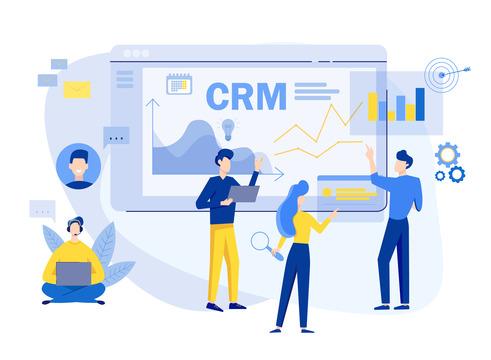How Do You Access Data for Workforce Intelligence?
Table of Contents
Gathering and analyzing workforce data is critical to the success of any company. Modern businesses and organizations rely on big data to make decisions, predict future outcomes, and minimize errors. There are various ways to collect relevant metrics, ranging from general business tools to workforce intelligence software and online resources. Here’s an overview of the top ways successful organizations and HR teams can access data for workforce intelligence.
1. Use A Workforce Intelligence Software
Investing in workforce intelligence software is a straightforward decision with many advantages if approached the right way. Modern tools collect data and feedback and provide quality reports and analytics. Using software makes gathering and analyzing workforce data effortless as they’re designed to cover core aspects and activities. Workforce intelligence tools can help with the following types of data:
• Structured Data – Refers to machine-readable data conforming to a specific code/format. Examples include employee age, gender, nationality, attendance records, and employment length. Structured data may also include browser history, online habits and activities, external device usage, company computer usage, and more.
• Semi-Structured Data – Refers to data with variable human input. Examples include employee engagement surveys featuring specific formats with accommodation for variable human response. Semi-structured data require more sophisticated machine learning algorithms to produce comprehensive data sets.
• Unstructured Data – Qualitative or unstructured data feature more variable inputs and qualitative factors. Such data can gauge employee activity, motivation, loyalty, work-related ambitions, and more. Unstructured data is the hardest to standardize if not for modern machine learning and workforce intelligence software.
2. Leverage Business Software Solutions/Tools
Modern businesses and companies use various applications and software solutions to solve specific issues. There’s a solution for every aspect, including security, communications and support, company meetings, payroll management, hiring and recruitment, and more. HR teams can leverage business software to gather valuable metrics and generate mission-critical reports. Most software applications feature intuitive dashboards for managing analytics and reports.

You would like to read- How Workforce Data Helps Company Investors
3. Employ Classic Feedback Tools and Approaches
Before software and online tools, companies relied on classic data collection methods like annual surveys. Businesses can use traditional approaches to gather data through forms, surveys, and meetings. The HR team can leverage modern technology to ensure a convenient, efficient process for data collection. Virtual meetings, digital surveys, and automated attendance logs offer opportunities to collect and access data for workforce intelligence.
4. Use Cloud Services and Resources
With businesses moving to the virtual space, cloud services have become inseparable from eCommerce. Companies can find cloud services for just about anything they need, including workforce intelligence. Businesses with limited time to explore data can hire professional workforce intelligence companies to liaise with HR in gathering, refining, and analyzing data. Workforce intelligence companies can also provide reports with actionable insights.
5. Use Universal Workforce Intelligence Databases
Records and databases are vital when making decisions for the future. Businesses must review workforce records, reports, and statistics to avoid errors and improve outcomes. Universal HR databases absorb and standardize employment records to provide instant insight into the market and competition. Companies can leverage databases to access statistics, current trends, competitor structures/strategies, and more.
Reliable Human Resource Database
Accessing data for workforce intelligence should be an effortless process with the right tools and solutions. Modern companies have many options for collecting enough data from their workforce, customers, leaders, shareholders, and competitors. However, data is only worthwhile if the HR team can analyze and generate actionable insights. The collection methods should also provide accurate and relevant metrics for specific analytics and missions.
Organizations need reliable workforce intelligence software and databases to get the best from data. Standardized employment records, HR databases, and free online resources can provide insights into workforce activities and trends to help inform strategy formulation. Modern digitized solutions are also accessible from anywhere using phones, tablets, and computers. HR should also have a straightforward means to analyze and interpret collected data.




